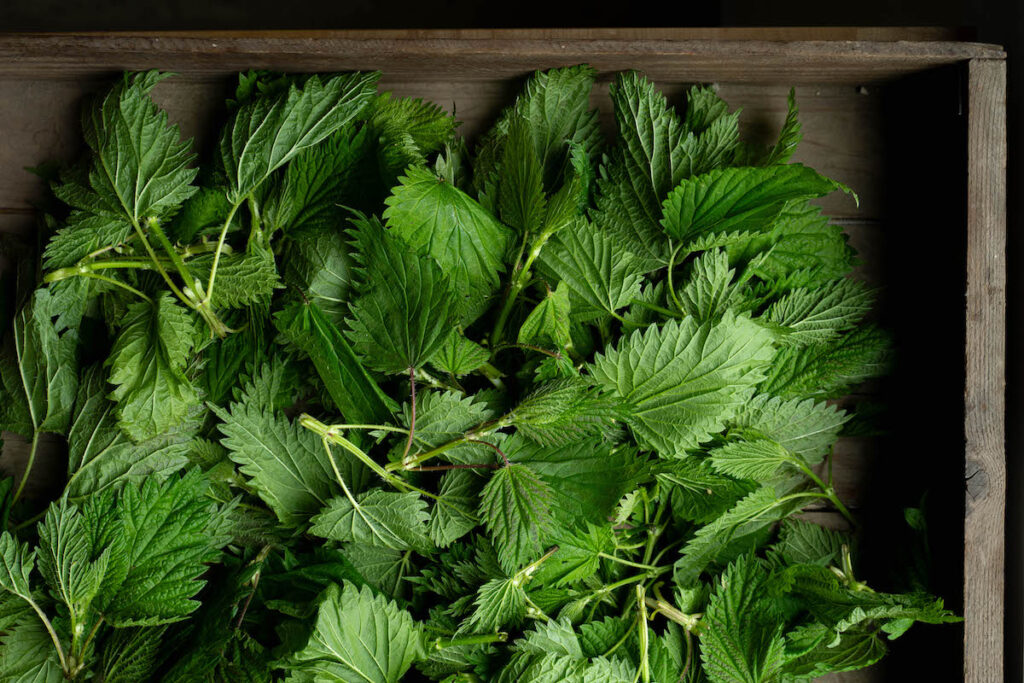
Harvesting and cooking with nettles is super rewarding. If you have an abundance of nettles growing near you, I recommend you take advantage of this and go get yourself some greens.
There’s no need to fear these feisty forest dwellers! Stinging nettles are known for living up to their name, but they’re also loaded with vitamins and minerals. They’re the superfood of the woods, and they’re delicious, too!
How to identify stinging nettles
Nettles (Urtica dioica) have some key features that make them very easy to identify. Look for these features:
Leaves: Nettles leaves are heart-shaped with a pointed tip and deeply serrated edges. They’re covered in fine hairs, especially on the underside (these are what cause the sting!). Their leaves grow in opposite pairs on the stem, meaning there’s two leaves at each node.

Stems: Look for square, hollow stems that are also covered in those tiny stinging hairs.
Flowers: Nettles have small, green to purple flowers that hang in long clusters from the leaf. However, if you’re harvesting nettles for food, it’s recommended that you collect them before they start to flower. After flowering, their texture won’t be as tender and they start to develop more bitter compounds.
Pin this now to find it later!
Pin ItWhen to harvest
Early to mid spring is a great time to harvest nettles. Here in western Oregon, the first week or two of April is often perfect. You want to catch the nettles when they have a few sets of leaves and are still very tender. As mentioned above, avoid harvesting nettles once they’ve started to flower.
How to harvest nettles
When harvesting stinging nettles, you’ll definitely want to be wearing gloves! Those tiny little hairs have a surprising amount of power. I recommend long, thick pants and leather working gloves. I’ve used gardening gloves to harvest them before, but the sting can get through the thinner, breathable areas on the top of this style of glove.
Use your fingers or a pair of scissors to snap off the top couple sets of leaves. These newer leaves are the most tender and delicious.
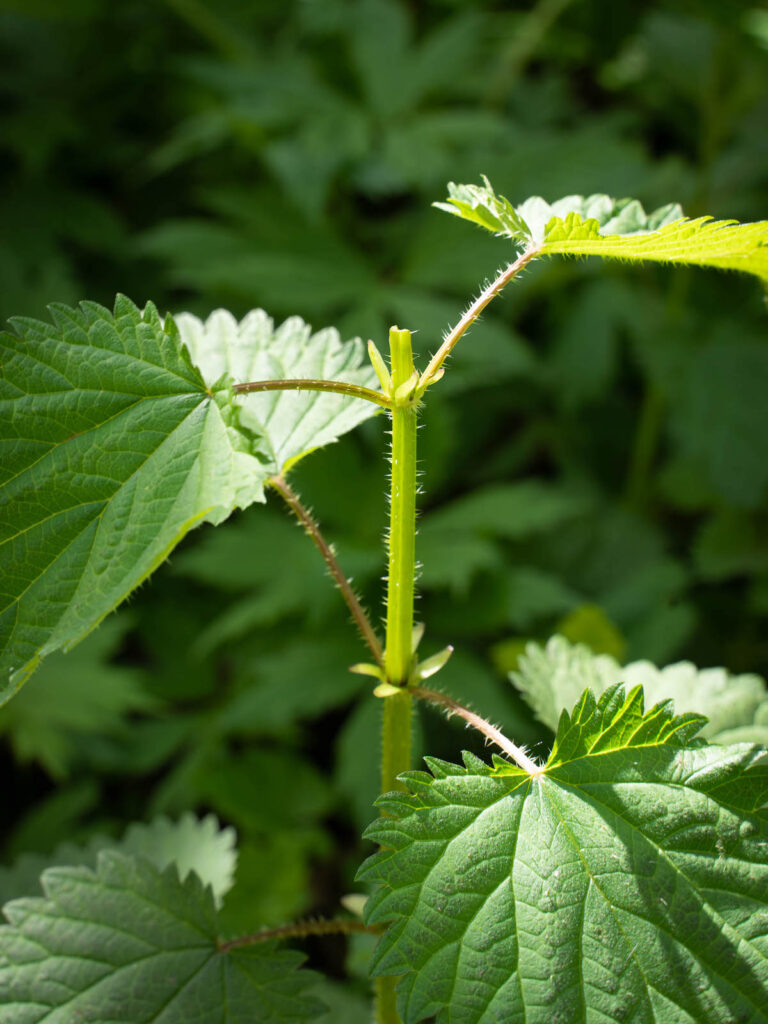
Responsible harvesting practices
When foraging for wild foods, there are certain practices to keep in mind in order to leave food for wildlife, not disrupt the local ecosystem, and preserve the patch for years to come.
Only take what you need
Don’t harvest more than you’re actually going to use. Be realistic about how much time you have to wash, prepare, and cook with the plants you bring home.
Take from different plants
Don’t decimate a single plant or patch of nettles. Take a few tops from nettles throughout a larger area, so the plants can continue to grow and thrive.
Tread lightly
Don’t go stomping through the woods, trampling all plants in your path. Be conscious of what’s growing and try not to harm the local flora in your harvesting pursuits.
Cooking with nettles
Once you’ve gathered what you need, it’s time to prepare your harvest! Cooking nettles is essential to take their sting away. One of the best ways to do this is to blanch them.
First, give them a light rinse in a colander. Fill a large bowl with ice water and have it ready and waiting so you can stop the cooking process as soon as you remove the nettles from the hot water.
Then, get a large pot of salted water boiling. Drop the nettles into the boiling water using tongs and gently push them under the water. Turn the heat down a bit and simmer for about three minutes, depending on how tender your greens are.
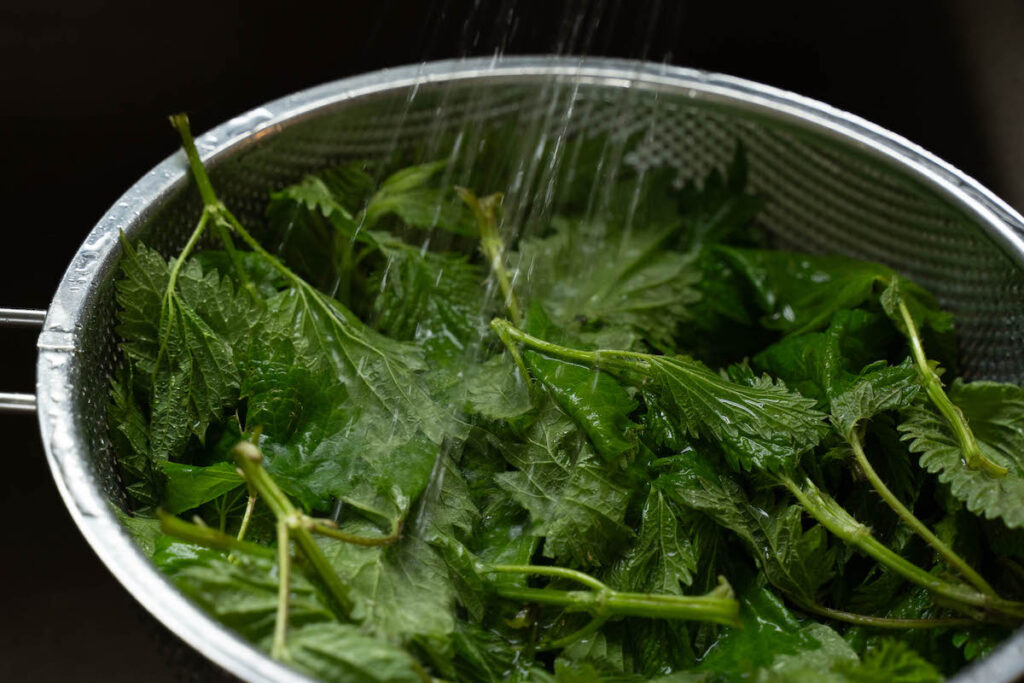
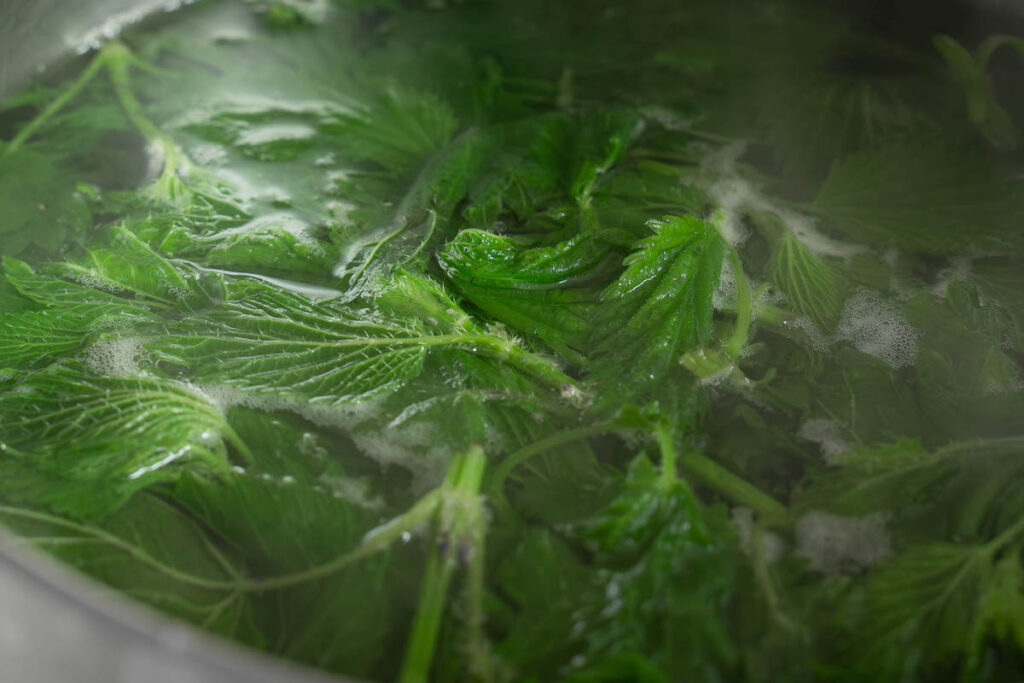
Remove the nettles using the tongs or a slotted spoon and plunge them immediately into the ice bath.
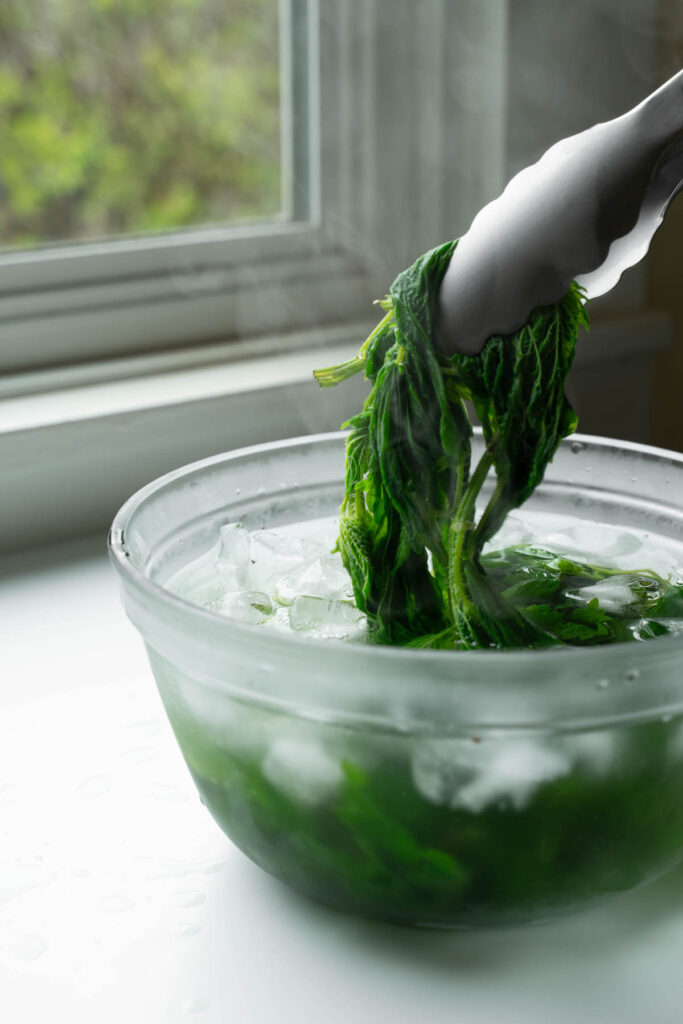
Once they’re cool, drain them from the cold water. You may want to remove large stems after cooking if they’re tough. If the stems are super tender, feel free to keep them and use them along with the leaves. Now you’re ready to add them to recipes!
Another option is to steam the nettles in a veggie steamer basket for 3-5 minutes. This is a gentler way to cook them, and may be preferable, depending on how you plan to use them.
Note: If you’re using nettles in a soup or stew, there’s no need to blanch them first. Simply add them into the soup when it’s very hot and cook them for at least a few minutes.
Using nettles in recipes
Think of cooked nettles like spinach. You could substitute nettles for spinach in just about any recipe. They’re great in soup, stew, pasta, and sauces. I especially love to make a nettle pesto with them. For a real treat, try this Nettle Pesto Swirl Bread.
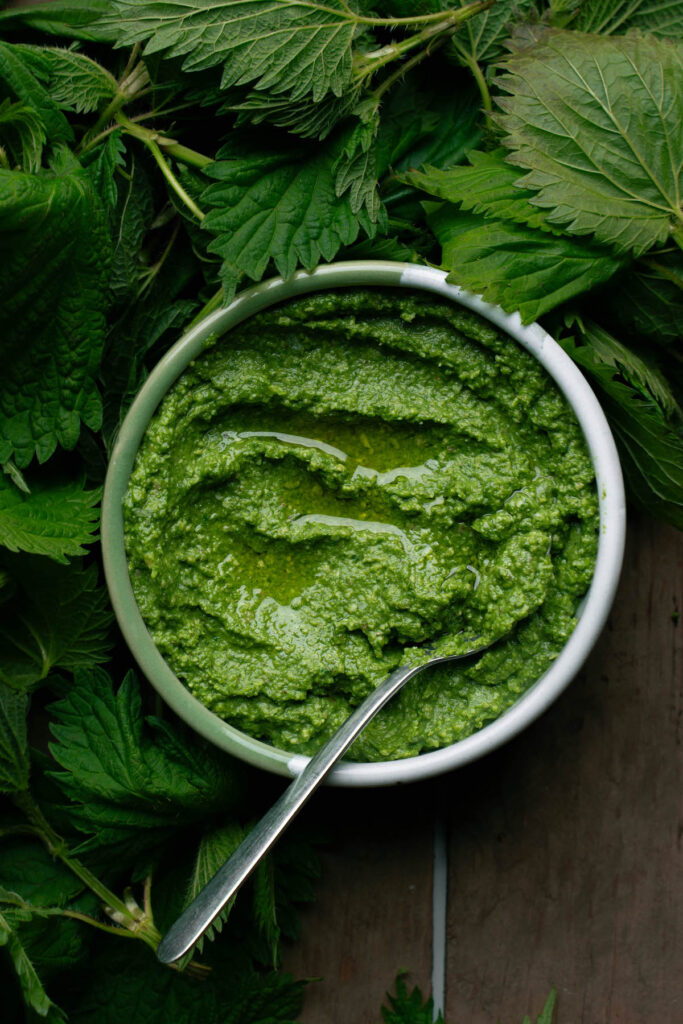
If you have any favorite ways to cook with nettles, let me know in the comments.
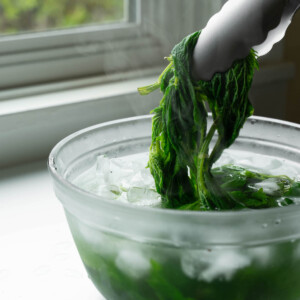
How to Blanch Nettles
Equipment
- Large cooking pot
- Large bowl
- Tongs
Ingredients
- Fresh nettle tops
Instructions
- Rinse nettles in a colander. Prepare a large bowl with ice water.
- Get a large pot of salted water boiling. Using tongs, drop nettles into the water, gently pushing them under so that they cook properly.
- Turn the heat down slightly and simmer for 2-5 minutes, depending on how young and tender the nettles are.
- Remove the nettles with tongs or a slotted spoon and immediately plunge them into the ice bath.
- Once cooled, drain the nettles. They're now ready to be used in recipes!
Notes
Did you try this recipe?
Be sure to leave a comment below!


